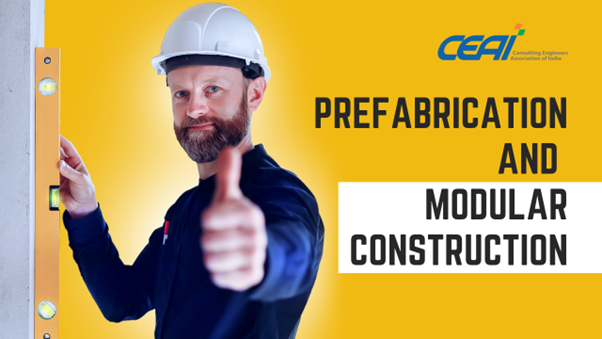
Prefabrication and modular construction offer greater flexibility than traditional construction methods. These methods allow for the easy modification of a building’s design, which can be particularly useful for buildings that are intended for long-term use or for projects that require multiple phases.
What is prefabrication and modular construction?
Prefabrication and modular construction are modern methods of building that involve assembling structures off-site, often in a controlled factory environment, and then delivering them to the construction site for final assembly. This type of construction is becoming increasingly popular as it offers a number of benefits over traditional construction methods.
Increasing popularity in recent years
Both prefabrication and modular construction have seen an increase in popularity in recent years, as more and more people are recognising the many benefits these methods have to offer. These benefits include reduced time and cost, improved quality control, greater flexibility, and environmental sustainability.
Benefits of prefabrication and modular construction
Prefabrication and modular construction methods offer cost savings, increased efficiency, improved safety, and reduced waste by constructing building components off-site before assembling them on-site. This leads to a higher-quality, sustainable and cost-effective building process.

Reduced time and cost
One of the main advantages of prefabrication and modular construction is that they can significantly reduce the time and cost of a building project. This is because the majority of the work is done in a factory setting, where it can be more easily controlled and managed. This results in a faster and more efficient construction process, with fewer delays and less downtime. Additionally, prefabrication and modular construction can reduce costs by minimizing the need for on-site materials and labour, as well as by reducing waste.
Improved quality control
In addition to reduced time and cost, prefabrication and modular construction also offer improved quality control. The factory setting allows for a more controlled and precise construction process, where quality standards can be more easily maintained. This means that the final product is more likely to meet the desired specifications and to be free of defects.
Greater flexibility
Prefabrication and modular construction also offer greater flexibility than traditional construction methods. This is because these methods allow for the easy modification of a building’s design, which can be particularly useful for buildings that are intended for long-term use or for projects that require multiple phases. Additionally, prefabricated and modular structures can be easily expanded or modified to suit changing needs, which can help to extend their lifespan.
Environmental sustainability
In addition to these benefits, prefabrication and modular construction can also be more environmentally friendly than traditional construction. These methods allow for the use of sustainable materials and energy-efficient design, as well as the efficient use of resources in the factory setting. Additionally, prefabrication and modular construction can generate less waste than traditional construction methods, as waste is minimized during the construction process.
Potential downsides
Prefabrication and modular construction have been touted for their benefits such as cost savings, increased efficiency, and improved safety, but there are also some potential downsides to consider.

Specialized equipment and skilled labour
Despite the many benefits of prefabrication and modular construction, there are also some potential downsides to consider. One issue is that these methods may require specialized equipment and skilled labour, which can drive up costs. Additionally, prefabrication and modular construction may not always be the best choice for certain types of projects or building sites.
Limited design options
Additionally, prefabricated and modular buildings may have limited design options compared to traditionally built structures. This can be an issue for some building designs or architectural styles, as prefabrication and modular construction can be more restrictive in terms of design possibilities.
Conclusion
In conclusion, prefabrication and modular construction are modern methods of building that offer many advantages over traditional construction methods, including reduced time and cost, improved quality control, greater flexibility, and environmental sustainability. While there are some potential downsides, the advantages of these methods often outweigh these potential downsides.

With the right planning and execution, prefabrication and modular construction can provide a highly effective solution for a wide range of building projects. However, this method may not be suitable for all types of projects.
